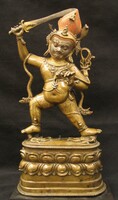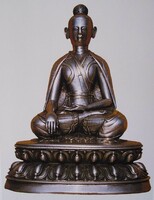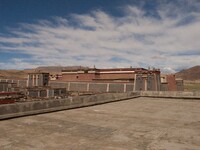Sakya Tridzin Wangdu Nyingpo - Updated

Additional images have been added to the Wangdu Nyingpo main page. He was the 29th Sakya Tridzin and considered the second Padmasambhava of this Age. He was considered to be a rebirth of Ngor Khenchen Palden Chokyong and others. Most of his profound teachings were received from his father Kunga Lodro, the previous Sakya Tridzin. Wangdu Nyingpo constructed a new Vajrabhairava temple in Sakya with a bigger than life size central image along with the twelve wrathful retinue figures slightly larger than the size of a man. Along with that he constructed a new protector chapel with very large sculpture. Renowned as a 'treasure Revealer' (terton) his books are still available and read today.
Wangdu Nyinpo is sometimes employed as a guruyoga practice based on a text that he wrote himself. He is depicted in a wrathful form with either a black hat topped with a raven or a standard Sakya hat with lappets draped across the top.
The 69th Abbot of Ngor Evam Choden Monastery, Ngagwang Yontan Gyatso (1902-1963), was believed by some to be an incarnation of Wangdu Nyingpo, as is the current Sakya Tridzin, Ngagwang Kunga (born 1941).



















